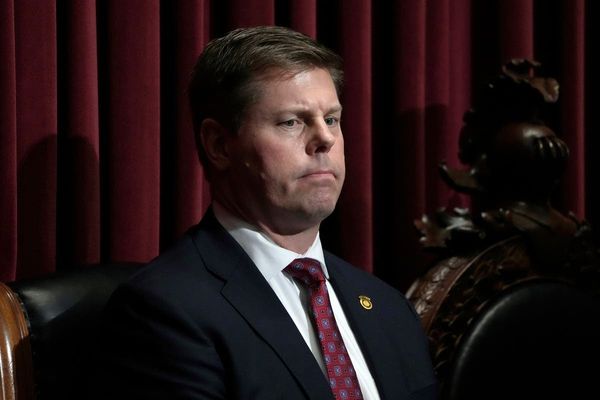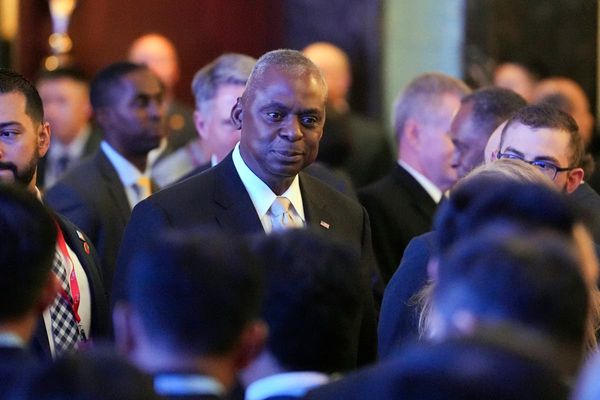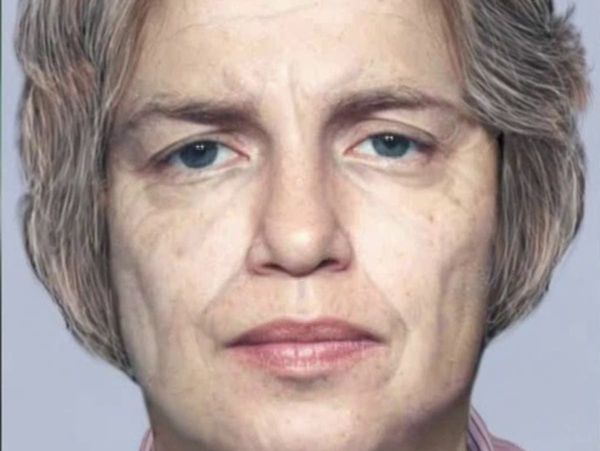Do you remember Gordon Fyfe's recent revelation that a blood-splattered knife was tossed over the fence of his parents' home in Barton in the 1960s?
Well, it turns out the out-of-place knife wasn't the only unusual discovery unearthed in the Fyfe's family garden.
In 1979, three years after his home was built in Kambah, Gordon found a saucer "only a couple of inches below the surface" featuring an artistic depiction of Provisional (Old) Parliament House.
"How it wasn't smashed by earthworks associated with the construction of the house is a complete mystery," exclaims Gordon.

"The home was in east Kambah, so nowhere near the rubbish tip or any known historic homestead sites and I can't imagine the tradies who built the house sipping tea with an antique cup and saucer at smoko."
Now, before you start thinking Gordon may have discovered a valuable relic, he admits to having the unusual find professionally appraised and discovering the saucer is "worth nothing without the cup".

However, what Gordon finds most remarkable isn't the saucer itself, rather the spelling of Capitol with an "o" instead of an "a". He wonders if it was intentional or perhaps a typo.

Nick Swain of the Canberra & District Historical Society confirms it's no typo. "Capitol was the name given to the parliament area, so, in this sense, the spelling on the saucer is accurate," he attests.
Nick refers to Canberra Following Griffin: A design history of Australia's national capital (National Archives of Australia, 2002, Canberra) in which author Paul Reid states "Griffin had the Capitol placed on Capital Hill (originally Kurrajong Hill)".
Reid further writes that "Griffin envisaged [the Capitol] to be a place of popular assembly, a repository of the national archives and an institution commemorating national achievements... The Capitol would stand at the focal point of the city plan and become the focus of national consciousness, a physical embodiment of all that was unique and distinctive in the Australian experience."

"I'll leave you to assess the extent to which this vision has been achieved!" muses Nick.
To further complicate matters, outside of this parliamentary area, many private enterprises have incorporated "Capitol" instead of "Capital" in their name. "These include Capitol Theatre, Capitol Cafe, Capitol Motors and Capitol Pharmacy," reveals Nick.
Now, if that's not confusing enough, spare a thought for the poor folk who attended the inaugural gala performance at the Capitol Theatre in December 1927 and glanced at the souvenir programme cover that was emblazoned with "Capital" instead of "Capitol".
"Apparently that was a mistake," reports Nick, citing Patricia Frei's book Mervyn Jones and the Capitol & Civic Picture Theatres: An Essay of Memories (Canberra, 2008), where the author states, "Throughout its life, the theatre's name was constantly misspelt, but the first spelling error appeared on the souvenir programme for the inaugural performance, spelling 'capitol' with a second 'a' instead of an 'o'! The Canberra Times repeated the mistake in the first paragraph of its commentary on the opening. However, the community always knew it was spelt with an 'o' and that was more important, and the newspaper duly followed suit."

Got it? I hope so.
Did You Know? When the Capitol Theatre opened in December 1927, there was one seat for every five Canberrans.
'I've seen it spelt about four different ways'

While many readers enjoyed last week's expose on Hoskinstown, several admitted to being baffled as to the spelling of the village.
"I've seen it spelt about four different ways," writes Penny Standen of Griffith. "Which is correct?"
Well, the answer is almost as convoluted as the Capitol versus Capital conundrum above, but here goes.
Although the settlement was first known as Blackheath, due to confusion with the Blue Mountains village of the same name, in 1870 the name was changed to Hoskin's Town.
For the following 100 years the village was spelt in numerous other ways including Hoskingtown, Hoskin Town, Hoskingstown and Hoskinton. Despite the name Hoskinstown being confirmed in 1969, many still used Hoskingstown.

In fact, according to Yvette Polonyi, "At one point last century the signs at either end of town were different. As a schoolkid, I did some work in a shearing shed there over summer and the stencil said 'Hoskingtown'. So, it was always Hoskingtown to me."
Finally, in 2002, The Geographical Names Board of NSW officially gazetted the village's name as Hoskinstown.
Don't forget the Hoskinstown chestnut roast this Sunday, May 12, from 10am-2pm, rain or shine.
Dad's army
Recent discussion in this column about the role of the Volunteer Defence Corps (VDC) during World War II prompted several readers, including Laurie Stroud of Fadden, to share their own personal anecdotes.
"When war broke out, my dad joined the VDC at Campbelltown where we lived at the time," reports Laurie.
"Probably because he was a WWI digger, he was given responsibility for the weapons allocated to the unit.
"We had a 303, a Martini rifle, a Thompson sub machine gun, a Bren gun and an Owen gun stored in our house," recalls Laurie. "As a safety measure, ammunition for these weapons was stored in the local police station about seven kilometres away.
"We had no car or phone so there would have been a bit of a problem in the event of a call to 'action stations'," muses Laurie, who adds "we were also too far away to hear the siren should it have been activated in the event of an air raid."
Special detour to inspect heritage Inn
Many readers were surprised to read about Woolingubrah Inn, the 1860s inn that came all the way from America in a flat pack. These included Bob Heacock who, although having passed through Cathcart several times, admits "knowing little history of the area and can't imagine walking from the coast to Kiandra".

The historic site is poorly signposted and as Bob points out, it's about 4.5km SSE, (not SSW as originally published) of Cathcart. The best way to get there is to follow the Coolangubrah Forest Way onto the Woolingubrah Road.
One reader who had no trouble finding the former inn is Brett Boyes of Karabar who after reading this column, on a recent trip down the coast "made a special detour to check it out".

He agrees with Bob it would have been "a decent hike" for those who couldn't afford a lift on a wagon and had to walk from the coast to the goldfields at Kiandra. "The Inn is about 70 kilometres from Eden and then the miners had to hike another 175 kilometres on to Kiandra."
Brett especially liked seeing the original shingles, now protected from the weather under a galvanised iron roof, and enjoyed wandering through the remains of the old orchard.
Meanwhile, Joanne De Costa reveals her husband Graham grew up at the former Woolingubrah Inn until he was 14, his family was the last to live there full-time, leaving in 1974.
Graham remembers the building being cold, especially in winter when there was occasional snow. If you do visit the former inn, now a heritage building open to the public, Graham's bedroom "was first on the right off the parlour".
WHERE IN THE SNOWIES?

Rating: Medium
Clue: A flying boat used to land near here.
How to enter: Email your guess along with your name and address to tym@iinet.net.au. The first correct email sent after 10am, Saturday May 11 wins a double pass to Dendy, the Home of Quality Cinema.

Last week: Congratulations to Andy Hogan of Bonython who, despite juggling a significant time difference, submitted the winning entry while on holiday in Whistler, Canada. "I've never stopped there, but it's the Numeralla River Rest Area located at Chakola between Bredbo and Cooma on the Monaro Highway," he explains.

There are currently some lovely autumn colours to enjoy at the relatively remote rest area which most motorists seem to ignore, preferring to drive on to the next stop with services.
SPOTTED

It's not just our exotic trees providing splashes of colour around the region - that much-loved mushroom of photographers, the white-spotted fly algaric (Amanita muscaria), is currently in full bloom, especially in our pine forests. Regular correspondent Rose Higgins captured this colourful cluster in Kowen Forest where she was also enamoured by a large termite mound.
- CONTACT TIM: Email: tym@iinet.net.au or Twitter: @TimYowie or write c/- The Canberra Times, GPO Box 606, Civic, ACT, 2601







